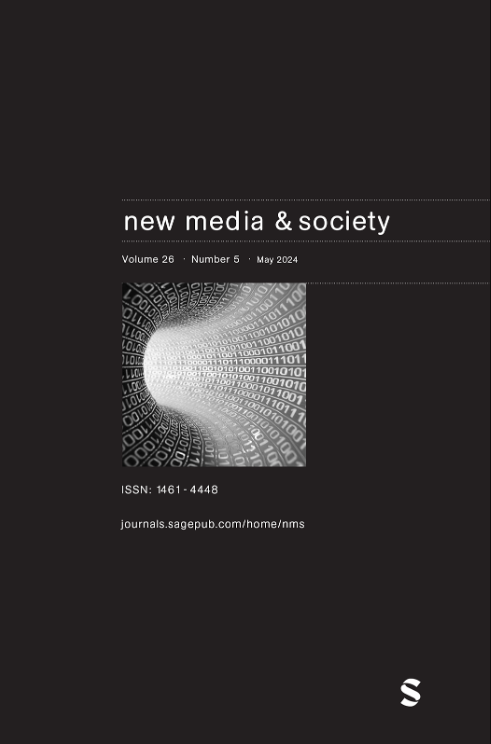TikTok作为同伴游乐场:了解童年中期的孩子如何使用TikTok塑造他们的同伴关系
IF 4.3
1区 文学
Q1 COMMUNICATION
引用次数: 0
摘要
尽管TikTok在12岁以下的儿童中很受欢迎,但我们对他们如何将这个平台用于社交目的的理解仍然存在很大差距。因此,我们想知道8至12岁的孩子如何通过使用TikTok来塑造他们的同伴关系。通过对课后护理背景下的儿童(n = 84)的纵向观察,我们发现儿童使用TikTok来发展和运用数字、文化和社会实践。这些做法的例子包括:引用热门内容来联系弱联系的同龄人;管理他们的在线存在,以防止在线下社交环境中受到审查;利用幽默趋势和TikTok的知识来获得社会地位和人气。在线上和线下空间采用这些做法可以支持和促进他们的社会资本发展。根据这些发现,我们主张支持和探索儿童社会和数字发展的倡议和方法。本文章由计算机程序翻译,如有差异,请以英文原文为准。
TikTok as a peer playground: Understanding how children in middle childhood use TikTok to shape their peer relations
Despite TikTok’s extensive popularity among children below the age of 12, there remains a significant gap in our understanding of how they use this platform for social purposes. We therefore ask how children between the ages of 8 and 12 shape their peer relations through their uses of TikTok. Through longitudinal observations of children ( n = 84) in the context of afterschool care, we found that children use TikTok to develop and employ digital, cultural and social practices. Examples of such practices are referencing popular content to connect with weak tied peers, managing their online presence to prevent scrutinization in offline social contexts and using humoristic trends and knowledge of TikTok to achieve social status and popularity. Employing these practices across on- and offline spaces can support and facilitate their development of social capital. Following these findings, we argue for initiatives and methodologies that support and explore children’s social and digital development.
求助全文
通过发布文献求助,成功后即可免费获取论文全文。
去求助
来源期刊

New Media & Society
COMMUNICATION-
CiteScore
12.70
自引率
8.00%
发文量
274
期刊介绍:
New Media & Society engages in critical discussions of the key issues arising from the scale and speed of new media development, drawing on a wide range of disciplinary perspectives and on both theoretical and empirical research. The journal includes contributions on: -the individual and the social, the cultural and the political dimensions of new media -the global and local dimensions of the relationship between media and social change -contemporary as well as historical developments -the implications and impacts of, as well as the determinants and obstacles to, media change the relationship between theory, policy and practice.
 求助内容:
求助内容: 应助结果提醒方式:
应助结果提醒方式:


